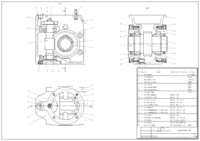
Photo from wikipedia
Computational approaches are useful tools to interpret and guide experiments to expedite the antibiotic drug design process. Structure-based drug design (SBDD) and ligand-based drug design (LBDD) are the two general… Click to show full abstract
Computational approaches are useful tools to interpret and guide experiments to expedite the antibiotic drug design process. Structure-based drug design (SBDD) and ligand-based drug design (LBDD) are the two general types of computer-aided drug design (CADD) approaches in existence. SBDD methods analyze macromolecular target 3-dimensional structural information, typically of proteins or RNA, to identify key sites and interactions that are important for their respective biological functions. Such information can then be utilized to design antibiotic drugs that can compete with essential interactions involving the target and thus interrupt the biological pathways essential for survival of the microorganism(s). LBDD methods focus on known antibiotic ligands for a target to establish a relationship between their physiochemical properties and antibiotic activities, referred to as a structure-activity relationship (SAR), information that can be used for optimization of known drugs or guide the design of new drugs with improved activity. In this chapter, standard CADD protocols for both SBDD and LBDD will be presented with a special focus on methodologies and targets routinely studied in our laboratory for antibiotic drug discoveries.
Journal Title: Methods in molecular biology
Year Published: 2017
Link to full text (if available)
Share on Social Media: Sign Up to like & get
recommendations!